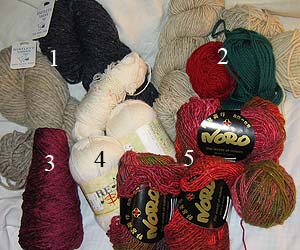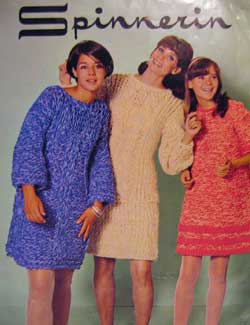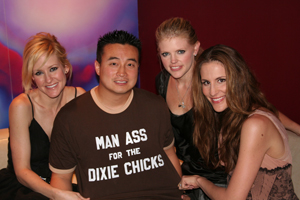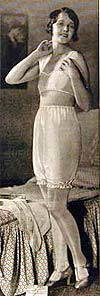The BIG Knitting post
This time, however, things were different. I loaded up my wonderful BagSmith birthday present...

...and knitted my way across Ontario and New York. I did not get motion sickness (which has plagued me from childhood and acted up as recently as my FIRST trip to Sch'dy as a new bride when I puked up a footlong hotdog on the side of some highway between Albany and the Berkshires). In fact, it worked quite well, with the exception of having practically nowhere to put my feet, now that the knitting was riding aside the food bag.
Between the trip to and from, and the quiet evenings at my inlaws', I was able to make this much progress on a summer cardigan from the last issue of Creative Knitting:

You probably can't tell from the photo, but the yarn is a soft coral (Cascade Sierra in color 55). It has a lacy bottom that was very fun to knit. Now I'm into the garter ridge, which is pretty boring. Maybe that's why they have you do the back first: get the longest rows out of the way first.
My mother-in-law is a wonderful, old skool knitter. She learned as a girl in Maine. She has been knitting with wool (and only wool -- no acrylic for her thank you) ever since. She has years and years of patterns, knitting magazines and yarn in her craft room. She was generous enough to open her craft room to my eager eyes. I came away with a bunch of Green Mountain Yarn patterns and these items from her stash:

1. Two skeins of bulky yarn left from a mitten project of hers.
2. Yarn for the Christmas stockings I promised my friend who got married in February.
3. Half a cone of mulberry-colored chenille (project suggestions?)
4. Leftover yarn from the sweater she knit my youngest when he was born (how could I not take that?).
5. NORO!
There's a bit of a story behind the Noro. Namely, I did not get it from my mother-in-law. Instead I bougth it at the yarn shore she took me to the day my husband and sons went with my father-in-law to tour a decomissioned navy ship in Albany. We drove to Altamont and went to The Spinning Room, which was very well stocked and had helpful staff (one of whom appeared to be the owner). Noro was on sale for $9 (which maybe wasn't such a sale, but it was $2 off the usual price there, so I registered a bargain). I don't know what I'll use it for but now I have 4 balls of Silk Garden. I have wanted Noro yarn for quite a while. My desire chakra has been temporarily appeased. Let's take a closer look, shall we?

Finally, I wanted to share a few tidbits from my mother-in-law's pattern collection. In thumbing through old Reynolds patterns, I came across these two photos, which have to be of Christie Brinkley and Tia Leoni before they hit the big time. Am I right?


Finally, for those of you who like "vintage" knitting, check out this swingin' pattern I uncovered.

If you knew my mother-in-law, you would realize this could only be in her posession through some accident. Perhaps my spouse's older sister bought it in the hopes her mother would finally make something "groovy" instead of "square." Or maybe someone put it there as a joke. Either way, I would pay a hefty sum to see my mother-in-law knitting this pattern, let along wearing the finished garment.
Labels: knitting



 Hardly. Though asking for money can feel just about that icky, especially as you're getting used to the idea.
Hardly. Though asking for money can feel just about that icky, especially as you're getting used to the idea.





